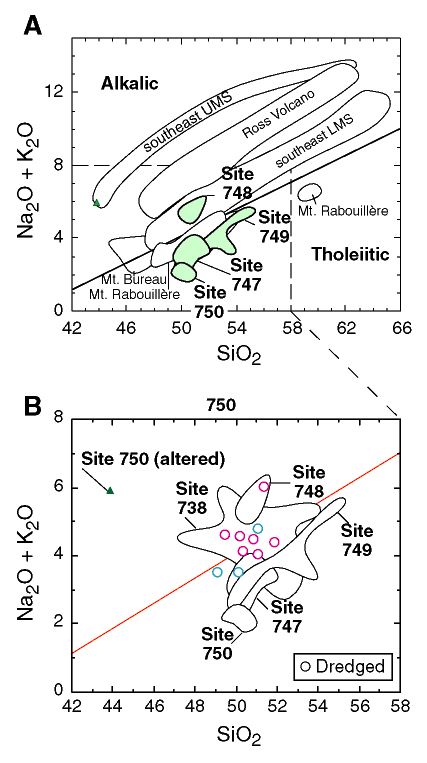Figure F8. Total alkalis (Na2O + K2O) vs. SiO2 plot (wt%) for classifying tholeiitic and alkalic basalts. Boundary line separating alkalic and tholeiitic fields is from Macdonald and Katsura (1964). All analyses are normalized to sum to 100% on an anhydrous basis with FeO adjusted to 80% of total iron. A. The open fields show the temporal evolution of Kerguelen Archipelago lavas from the ~30-Ma flood basalts, with compositions transitional between tholeiitic and alkalic lavas (Mts. Bureau and Rabouillère), to the slightly alkalic Southeast Lower Miocene Series (LMS) to the highly alkalic Southeast Upper Miocene Series (UMS). Data sources are Weis et al. (1993, 1998b) and Yang et al. (1998). In contrast, lavas from Kerguelen Plateau ODP Sites 747, 749, and 750 are tholeiitic basalts, except for the above-basement lavas from ODP Site 748, which are alkalic basalts. B. Expanded panel showing more detail for basalts drilled and dredged from the Kerguelen Plateau and Broken Ridge. Lavas dredged from the central Kerguelen Plateau and Broken Ridge (open circles) and ODP Site 738 straddle the boundary line, largely because the total alkali contents of these lavas were increased during postmagmatic alteration. As an extreme example, the solid triangle indicates a highly altered sample from ODP Leg 120, Site 750 (Sample 120-750B-19R-1, 47-50 cm). Data from Davies et al. (1989), Storey et al. (1992), and Mahoney et al. (1995).

![]()